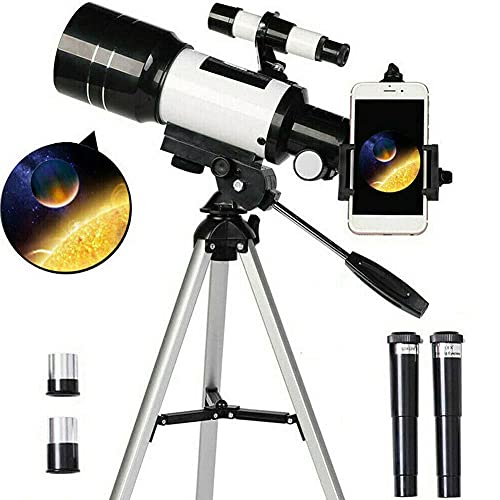Yes, you can use a telescope to view comets
Comets are some of the most fascinating objects in our solar system. With their brilliant tails and unpredictable appearances, they have captured the interest and imagination of astronomers and casual stargazers alike for centuries. And while comets can often be seen with the naked eye, using a telescope can enhance the viewing experience and allow for more detailed observations.
Choosing the right telescope
When it comes to viewing comets, choosing the right telescope is crucial. While any telescope can technically be used to view comets, there are certain features that can optimize the viewing experience. For example, a telescope with a larger aperture (the diameter of the primary mirror or lens) will allow for more light-gathering power, resulting in brighter and clearer views of comets. Additionally, a telescope with a longer focal length will provide greater magnification, allowing for more detailed observations of a comet’s nucleus and tail.
Locating comets
Once you have a telescope set up, the next step is to locate a comet in the night sky. The best way to do this is by using star charts or astronomy apps, which can help you pinpoint the exact location of a comet at any given time. It’s also important to remember that comets are constantly moving through space, so their positions in the night sky will change over time. Be sure to check regularly for updates on the whereabouts of comets you are interested in observing.
Additionally, comets are often more easily visible during certain times of their orbit, such as when they are closer to Earth or when they are passing through the inner solar system. Keep an eye on astronomical websites and resources for information on upcoming comets that may be visible and plan your observation accordingly.
Observing comets
When observing comets through a telescope, it’s important to use the appropriate magnification for the size and brightness of the comet. Start with a lower magnification to get a wide field of view and locate the comet, then gradually increase the magnification for a closer look. Experiment with different eyepieces to find the best combination of magnification and clarity for the specific comet you are observing.
When viewing comets, it’s also important to be patient and give your eyes time to adjust to the darkness. Allow at least 20-30 minutes for your eyes to fully adapt to the low light conditions. This will help you see more details and subtle features of comets that may not be immediately apparent.
Capturing images of comets
If you are interested in photographing comets, using a telescope can greatly improve the quality and detail of your images. With the right equipment and setup, you can capture stunning images of comets and their intricate tails. To do this, you will need a camera adapter that allows you to attach your camera to the telescope. Additionally, using longer exposures and stacking multiple images can help capture more detail and reduce noise in your comet photographs.
Keep in mind that comets can be challenging to photograph, as they are often faint and move across the sky relatively quickly. Practice and experimentation are key to achieving the best results. Consider joining local astronomy clubs or online communities to learn from experienced astrophotographers and gain valuable tips and techniques for capturing stunning images of comets.
In conclusion
Yes, a telescope can be used to view comets and enhance your understanding and appreciation of these celestial wonders. By selecting the right telescope, locating comets in the night sky, and fine-tuning your observation techniques, you can experience the beauty and majesty of comets in a whole new way. Whether you are a seasoned astronomer or a curious beginner, exploring comets with a telescope can be a rewarding and awe-inspiring experience.






